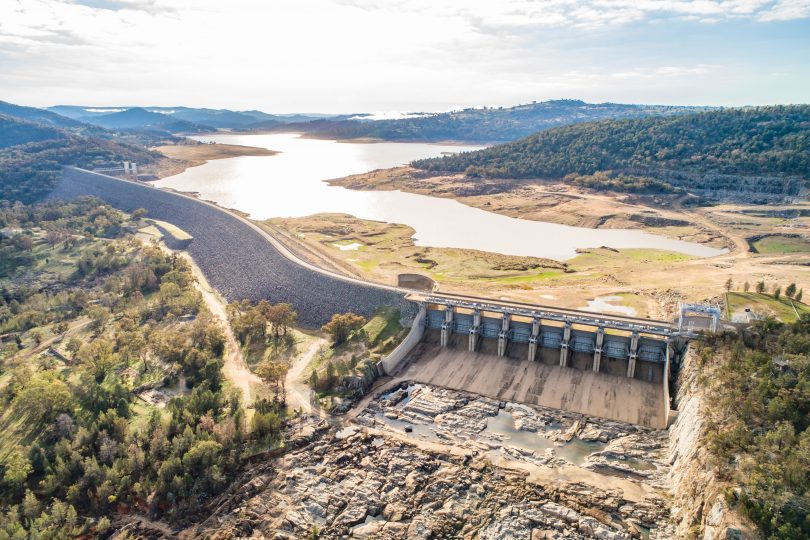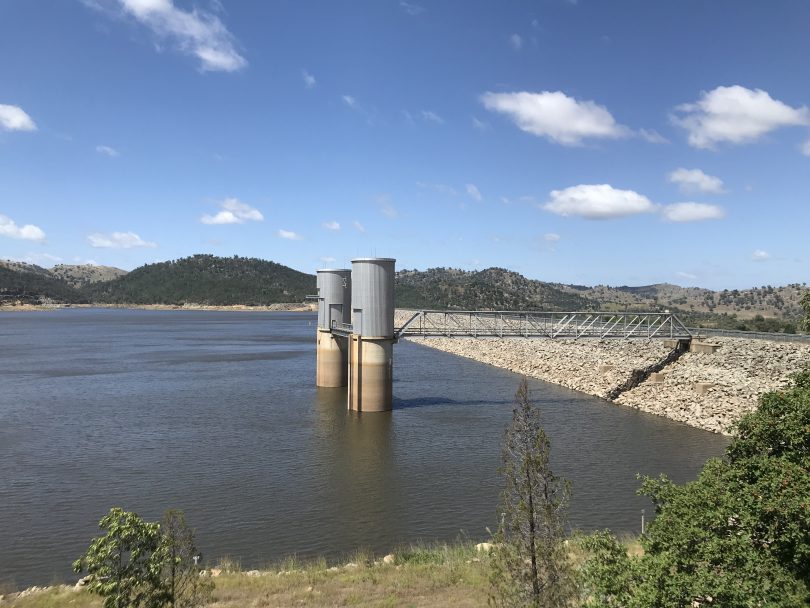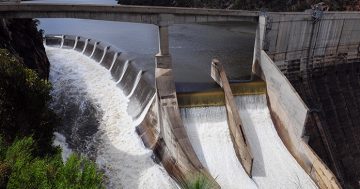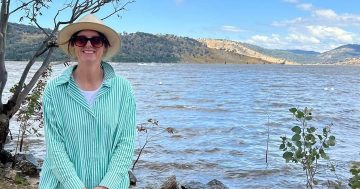
Sandy banks were exposed at Burrinjuck Dam, in the Yass Valley, during the prolonged drought. Photo: Sharon Prins Photography.
Water storage at Brogo Dam, north of Bega, has risen from 10 per cent in drought-stricken January 2020 to 101 per cent currently, following a wet and wild year.
It is a similar story across southern NSW, with Blowering Dam at Tumut soaring from below 40 per cent last January to 77.7 per cent this January.
Likewise, Burrinjuck Dam in the Yass Valley has jumped from 30 per cent to 78.4 per cent, while Wyangala Dam, between Goulburn and Cowra, has swelled from 10 per cent to 61.5 per cent.

Burrinjuck Dam at full capacity in recent times. Photo: Water NSW.
A spokesperson for Water NSW says this significant increase translates to greater water security for all downstream users, including local communities, farmers and the environment.
Brogo Dam can store up to 8.9 gigalitres and supplies water to Bega Valley’s dairy industry, other farmers along the Brogo River and Bega River, and the townships of Cobargo and Bermagui.
It’s not surprising that water storage has risen so significantly at Brogo Dam, after receiving 1306mm of rain in 2020 compared to 443mm in the previous year, and its 968mm annual average.
Overall, it was one of the wettest and wildest years on record for parts of NSW.
While Brogo Dam is one of the smallest dams in NSW, Blowering Dam is one of the largest, capable of storing 1628 gigalitres, or three times the volume of water in Sydney Harbour.
In 2020, the dam received almost double the amount of rainfall from 2019, with 936mm recorded in Tumut.

Wyangala Dam in July 2020 when water storage dropped to around 15 per cent. Photo: Water NSW.
Blowering Dam not only supplies water for farms and towns along the Tumut River and Murrumbidgee River, but also to the Snowy Mountains Hydro-Electric Scheme.
Burrinjuck Dam, which supplies water to the Murrumbidgee Irrigation Area, recorded 939mm of rain in 2020 compared to 507mm in 2019. Wyangala Dam, which supplies water for irrigation in the Lachlan Valley, received 880mm compared to 486mm in 2019.
As a result, releases at Burrinjuck Dam were increased to 7400 megalitres per day in December 2020.

Wyangala Dam after rain in December 2020. Photo: Hannah Sparks.
Owners of holiday parks have been celebrating a return of fishers, boaters and swimmers to these dams.
After a prolonged dry period during the drought, Burrinjuck Waters Holiday Park proprietors Liz and Don Richardson were looking forward to a busy holiday season, with cabins and camping spaces booked out weeks in advance.
“The water is a blessing,” said Liz. “It’s been incredible going from drought, straight into bushfires and smoke, and then getting our water back.”
However, while all of the dams have enjoyed a significant increase since January 2020, most will need more rain this year to reach 100 per cent.
Brogo Dam is one of only three dams in regional NSW that are currently full. The other two are Lostock Dam in the Hunter Valley and Toonumbar Dam on the NSW North Coast.
The good news at this stage is that the Bureau of Meteorology is predicting above-average rainfall across the state between January and March, driven by La Nina.






